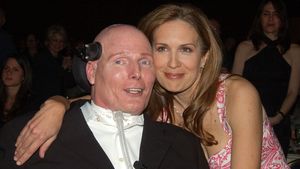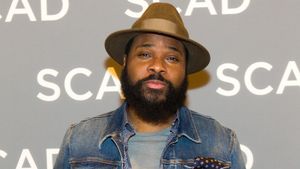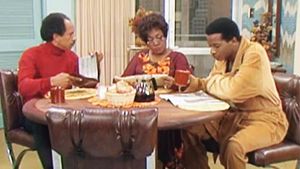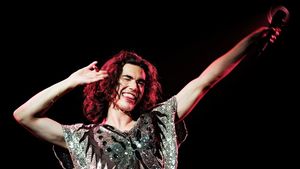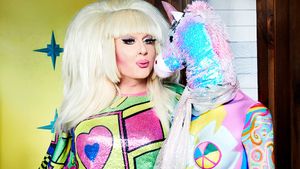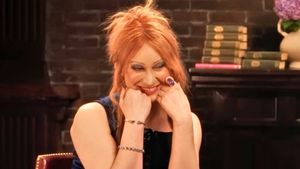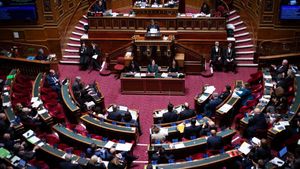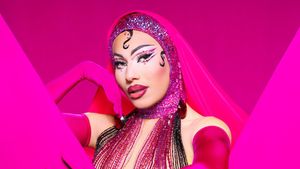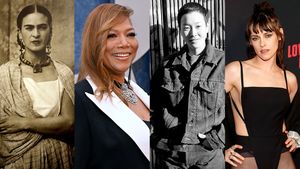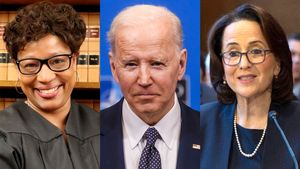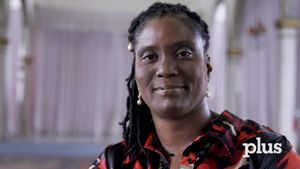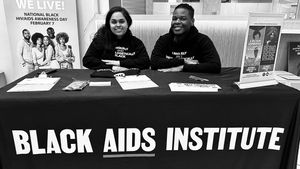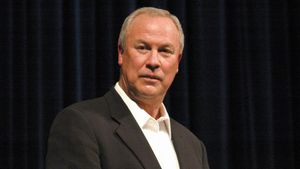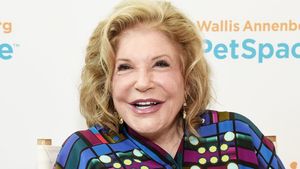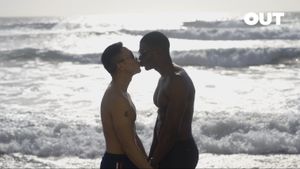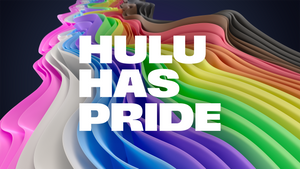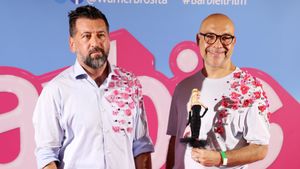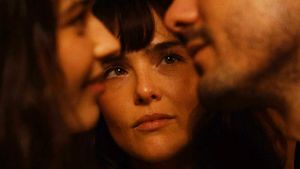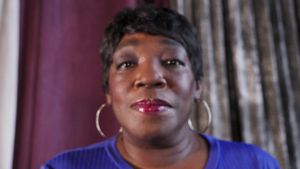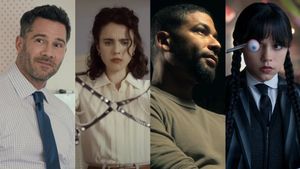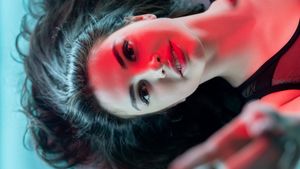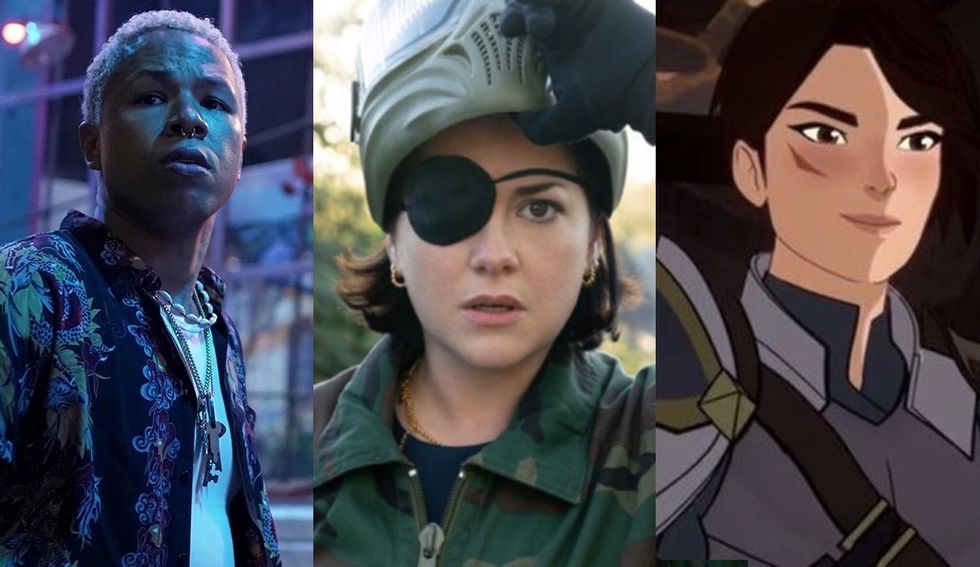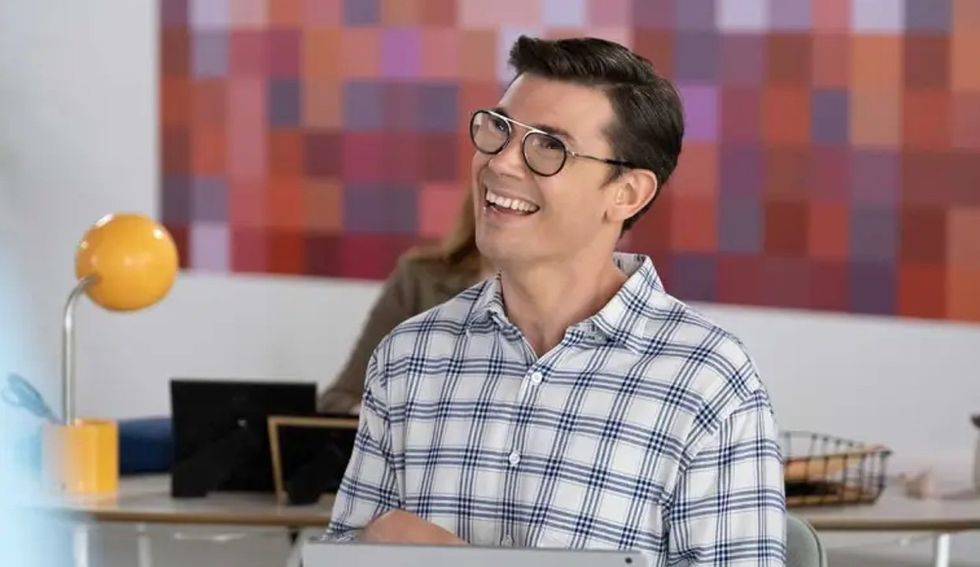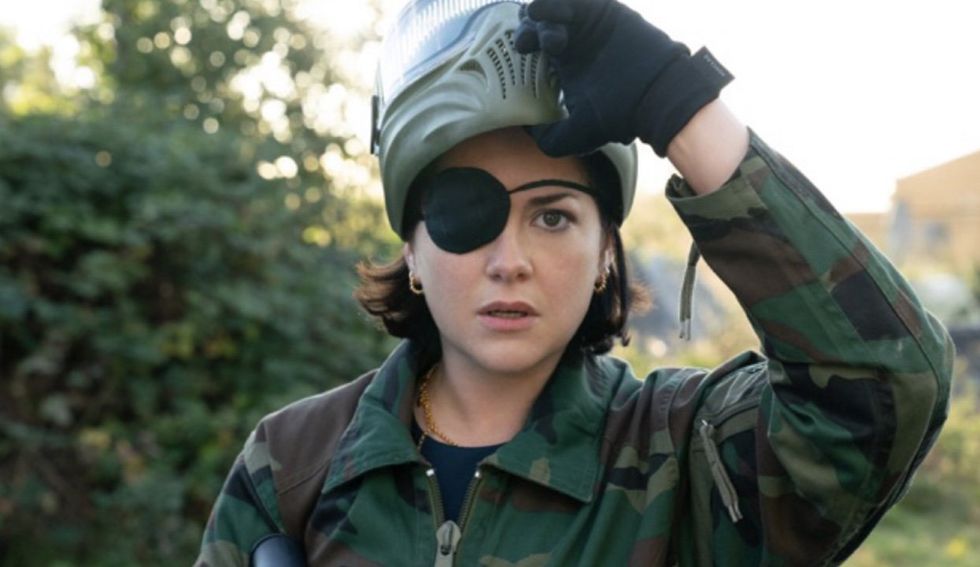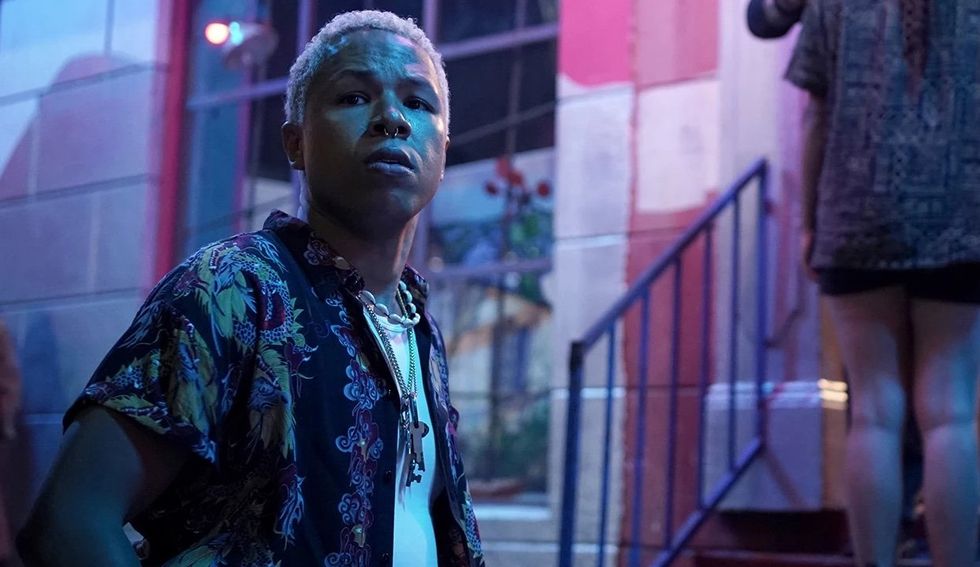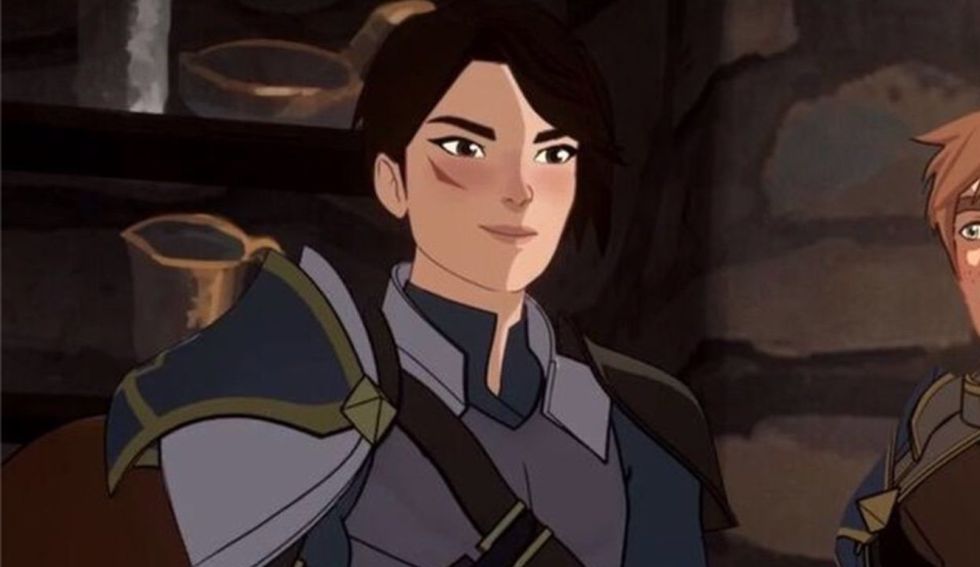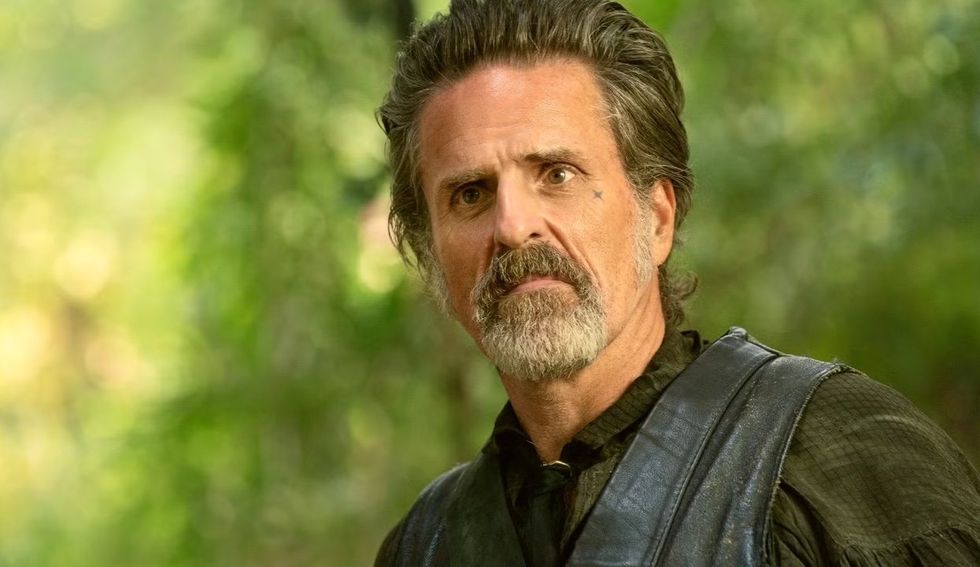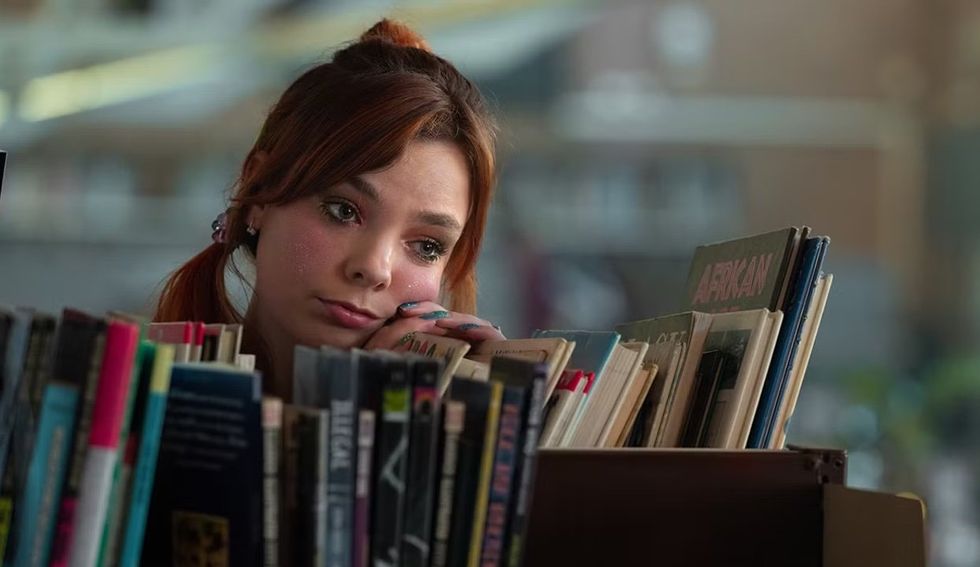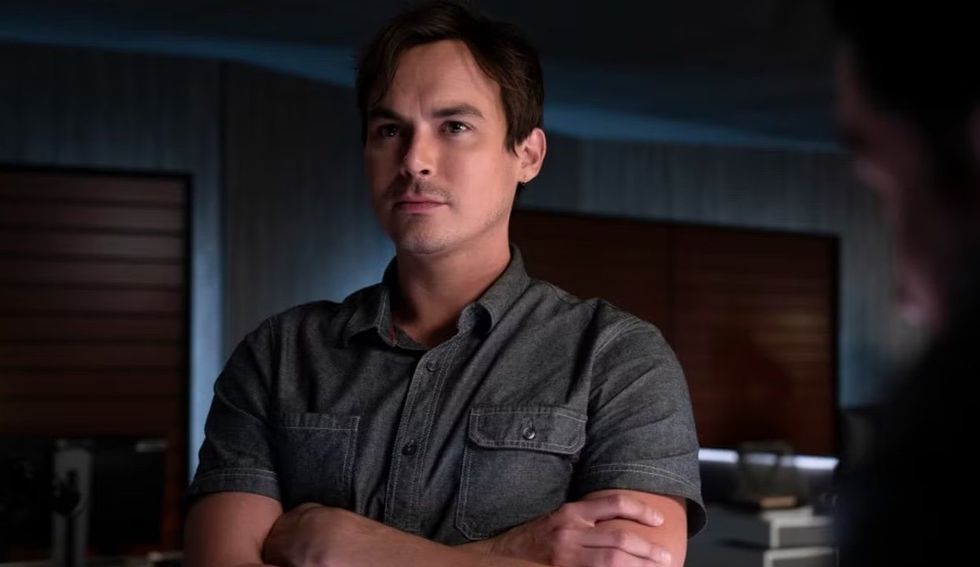A lot has changed since 1993, and Netflix's new special Rocko's Modern Life: Static Cling jumps headfirst into the 21st century with its usual hilarious hijinks - and a powerful transgender storyline.
After drifting in space for twenty years, Rocko, Heffer, and Filburt crash land back on Earth to a whole new world of oPhone Xs and high rises. Rocko is overwhelmed by the change and to regain some kind of control in his life, he's desperate to get his favorite show back, The Fatheads. He goes looking for the creator, Mr. Bighead's kid, Ralph. They track Ralph down but as Ralph gets out of the ice cream truck that she runs, she has to reintroduce herself.
"I'm not Ralph anymore. I'm Rachel," she tells Rocko, Filburt, and Heffer. "Since the last time I saw them, I've changed."
The gang's overwhelming supportive of Rachel is powerful for a cartoon that is technically for children. But she still has to come out to her parents. Mr. Bighead isn't quite as accepting and in his own stubbornness, disowns her. He's "suffering from TMC, 'too much change.'"
The special is surprisingly touching and poignant and without revealing the entire plot, Mr. Bighead reaches a refreshing conclusion by the end of the special. "We can't live in the past," he realizes. "We can be grateful for it. But life is isn't permanent. And if we don't embrace what's now, we miss out on a lot of the important stuff."
PRIDE talked with the show's creator, Joe Murray, about the powerful special and why he wanted to tell such an important and moving transgender story.
PRIDE: The special gets very meta with its message about the change needed to move a revived 90s cartoon into the present. Is that a nudge/wink at OG Rocko's Modern Life fans who might want more of the same kind of content from 1996?
Joe Murray: The main story idea came from the irony that many shows from the 90’s are being embraced by streaming audiences, but also that networks see them as still valuable and relevant properties. But we have all gone through so many changes (I personally have had a lifetime between doing those first episodes and now.) In some ways I like change, but many ways I fight it. I thought there were many things we could say about that.
Why did you choose to make a trans character's coming out so vital to that storyline?
I thought it was a fantastic way to celebrate the good changes that have happened, like the representation of the transgender community in modern media. The growing acceptance that we have seen in the past few years. Rachel in the old series always had a problem with who she was, struggled with finding herself. And here she is, better and happier than ever.
Was Rachel's narrative arc inspired by any real-life people or experiences?
It was more observation and natural character evolution that inspired it. It was a coincidence that a family member of mine was going through a transition at the same time and was having some issues with her parent’s acceptance of it. My characters always feel alive to me, and Rachel's story seemed so natural to her.
Mr. Bighead is hesitant at first but eventually comes around to loving his daughter. Why did you want to show such a positive and wholesome message of acceptance in a kid’s cartoon?
I feel it’s important for adults and kids to see modeled behavior that reflects the times we live in. And when you see people go through their own processing issues, there might be some relating to that. And also see what the intelligent outcome is. As Ed Bighead says in his own clunky way "If you don’t embrace change, you might be missing out on some really important stuff.”
What do you hope viewers learn from Rocko's Modern Life: Static Cling?
I’m not so big on trying to teach things or stand on a soapbox. But I do like to hold up a mirror to society and say “hey, do you see what we are doing?” If others can relate to what we choose to satire, all the better. We worked really close with GLAAD to make sure we were true in our storytelling with Rachel. I feel really good about what the special says overall. If there is some immersion learning, that’s an added side benefit.
The special was also a commentary on how cartoons are animated and how computers can zap out a certain joy and humanity. Rachel actually hand draws the revival of The Fatheads, and I noticed the animation style felt different when it aired. How was Rocko's Modern Life: Static Cling animated? Is that massive technological shift something you've struggled with having worked in this industry for 27 years?
I’m a big fan and advocate for hand-drawn 2D animation, and although we make fun of it, there are some computer-animated films that I love out there, but it’s usually because the story was excellent and they had good character development. But yes, we went through a lot of effort to keep the look from the 90’s series consistent in the special. Down to scrutinizing the pencil line quality on the screen to replicate the look of xeroxed cels, which is what we used in the ’90s. Finding hand painters was difficult and the Dr. Martin dyes we used in the ’90s had to be special-ordered because nobody uses them anymore. We also dirtied up the final film to have the HD match more of an image that came out of your '90s TV. But there were many advancements we embraced when making this, so it’s a love/hate situation.
Last question is actually a comment haha. The reveal of the worms typing away at the computers with the end of their bodies made me cackle out loud.
I can’t remember whose gag that was (It wasn’t in the part I storyboarded) so I’ll give a shout out to the other story artists: Cosmo Segurson ( also co-director) Tom Smith and Dan Becker. But thank you.
Rocko’s Modern Life: Static Cling is out now on Netflix. Watch the trailer below:


